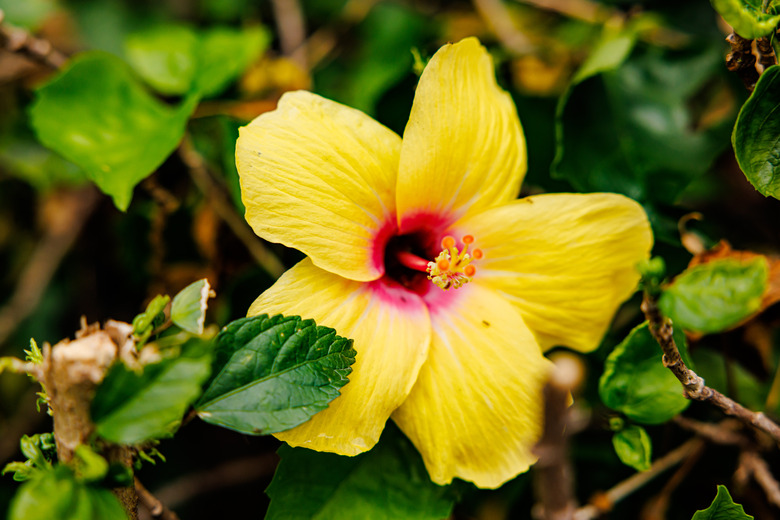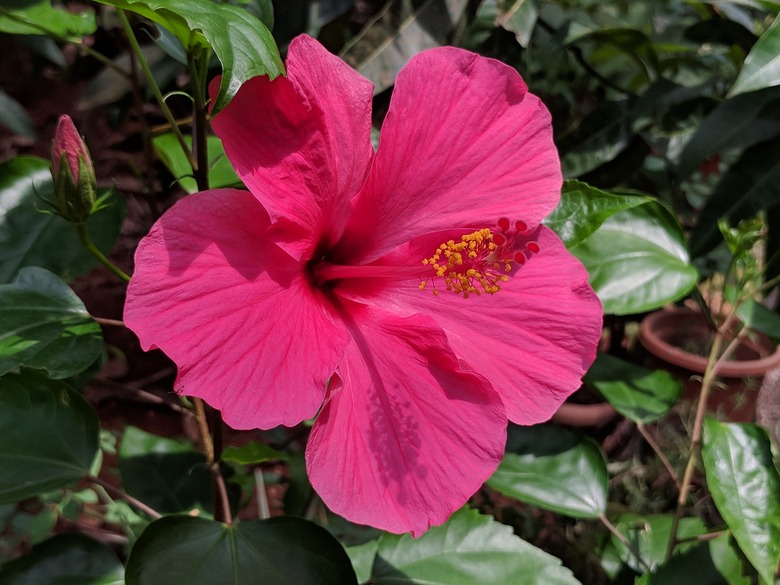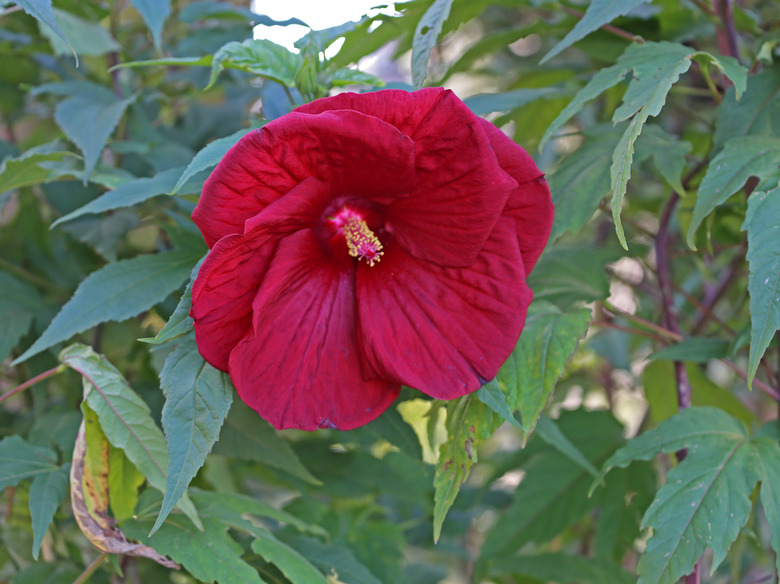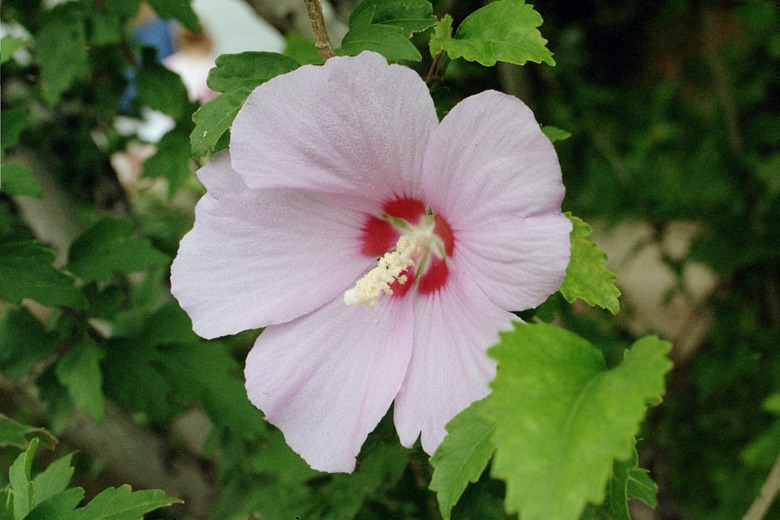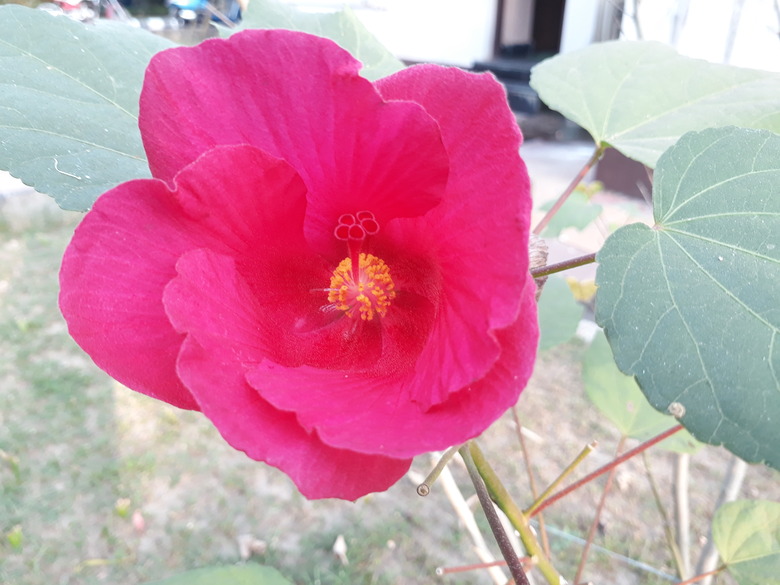Hibiscus Tree Identification
If you have a hibiscus, how do you know what type you have? It may look tropical with its showy, five-petaled flowers, or it just might be the kind that can endure colder temperatures.
Hibiscus plants fall into one of two categories: either tropical hibiscus or the many varieties of hardy hibiscus shrubs. If your hibiscus is in more of a tree form, that gives you further clues as to the type of hibiscus it is.
Tip
Most hibiscus plants are classified as shrubs, not trees, although some can grow quite large, up to 15 feet, depending on the species and cultivar.
To make identifying your hibiscus easier, understand that all tropical hibiscus shrubs are a variety of Hibiscus rosa-sinensis (USDA hardiness zones 9 to 11), while hardy hibiscus shrubs, also called perennial hibiscus, may refer to multiple species in the hibiscus genus. Here's how to tell them apart.
Tropical (Chinese) Hibiscus
If you have a tropical hibiscus, you probably know it because either you live in a warm climate where it can remain outdoors throughout the winter or you bring it into a protected area if you live outside its growing zones.
Aside from a lack of cold-hardiness, **the primary distinguishing feature of the tropical hibiscus is that its leaves are glossy and dark green, compared to other hibiscus types, which have leaves that are more matte-like and less green.**
In addition, their flowers are larger and more tropical looking. They also may bloom in colors unusual to hardy hibiscus shrubs, such as salmon, peach, yellow or multi-hued.
Tropical hibiscus plants have different and longer flowering seasons than the hardy types, blooming from early spring through fall.
Most tropical hibiscus plants grow 4 to 10 feet high and 5 to 8 feet wide, so these are large flowering shrubs that make an effective focal point in any landscape. They can grow in full sun or partial shade, although they'll flower best with more light.
While some cultivars are dwarfs, some common cultivars that can reach 6 feet or taller are:
- Delta Dawn (Hibiscus rosa-sinensis 'Delta Dawn') with flowers in red to purple that can be 7 inches in diameter.
- Donna Lynn (Hibiscus rosa-sinensis 'Donna Lynn'), featuring creamy yellow and pink pastel petals with a deep red center.
- Electric Plum (Hibiscus rosa-sinensis 'Electric Plum') with deep purple petals, unusual in a hibiscus.
Hardy Hibiscus Species
One specific hibiscus species is typically referred to as the hardy hibiscus, and that is H. moscheutos, zones 5 to 9, but another, well-known and much-beloved hibiscus that can handle colder temperatures is rose of Sharon (H. syriacus, zones 5 to 8). In addition, confederate rose (H. mutabilis) can grow down to zone 7. Here's a rundown.
Hardy Hibiscus (Hibiscus moscheutos)
Also referred to by the common names rose mallow, swamp rosemallow or perennial hibiscus (zones 5 to 9), this plant has pink, red or white flowers and can reach 6 to 7 feet tall. It's herbaceous, meaning that it dies back to the ground at the end of each growing season but quickly puts on new growth to regain its height in spring.
**Defining feature:** This shrub has enormous hibiscus flowers up to 8 inches across in white, pink, red or burgundy.
Rose of Sharon (Hibiscus syriacus)
Also called rose of China or shrub Althea, rose of Sharon (zones 5 to 9) typically has red, white, lavender or pink flowers and can reach 12 feet tall and 6 to 10 feet wide when mature.
This plant has the smallest flowers among the cold-hardy hibiscus shrubs at just 1 to 3 inches in diameter, but they still feature that sumptuous tropical look characteristic of all hibiscus blooms.
**Defining feature:** Unlike most of the hardy hibiscus shrubs, rose of Sharon is a woody plant, meaning that it retains its form, including its trunk and branches, in winter.
Confederate Rose (Hibiscus mutabilis)
Also called cotton rose or cotton rose mallow, confederate rose is a flowering shrub that can reach 12 feet high and 8 to 10 feet wide. Flowers are 3 to 6 inches in diameter.
**Defining feature:** This plant has distinctive flowers that open white, turn pale pink, and finally change to dark pink when fully mature.
References
- Missouri Botanical Garden: Hibiscus rosa-sinensis
- NC State Extension: Hibiscus mutabilis
- Clemson University: Hibiscus
- Tropical Hibiscus: Growing Tropical Hibiscus Up North
- NC State Extension: Hibiscus rosa-sinensis
- All About Gardening: 41 Different Types of Hibiscus Varieties
- NC State Extension: Hibiscus moscheutos
